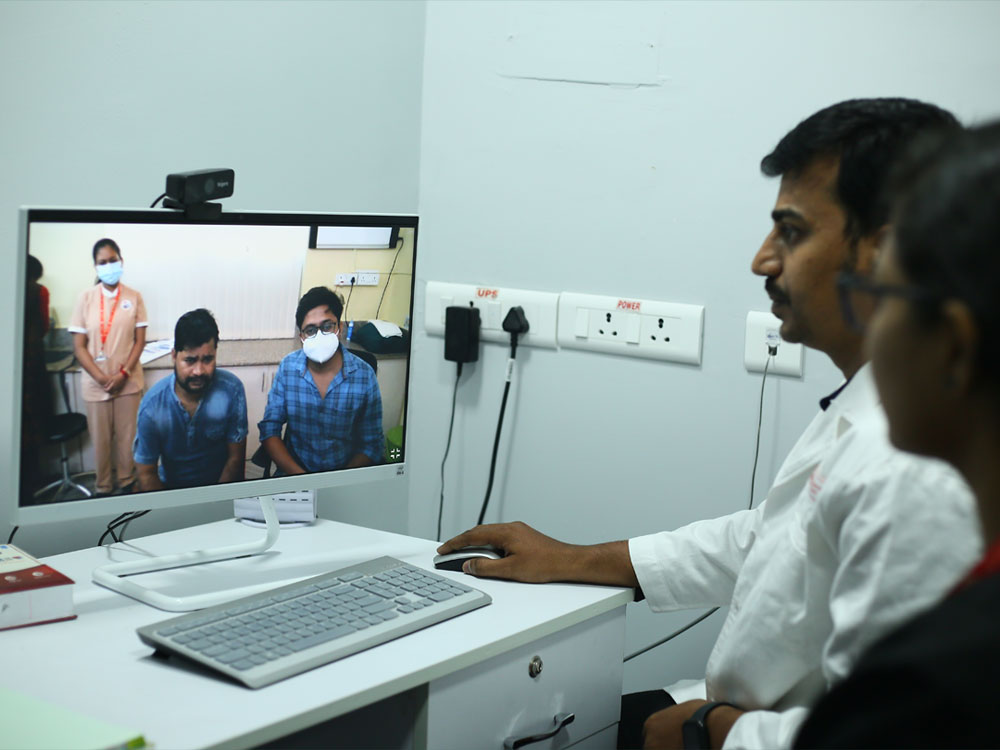
REACHING CARE TO WHERE IT’S NEVER BEEN.
Meenakshi Tele Care (MTC) is the telemedicine project at MMHRC. Launched in 2009, it is aimed to improve the accessibility of quality healthcare to underserved rural areas. The telemedicine system was introduced by MMHRC and is supported by Direct Relief International (USA), the Indian Space Research Organization (ISRO) and a few prominent NGOs.
Telemedicine provides delivery of healthcare services to places where distance is a critical factor. In this practice, all the healthcare professionals involved use information and communication technologies for exchange of valid demographic information, diagnosis, treatment and the prevention of disease complications and injuries.
Why Telemedicine?
People living in remote areas often struggle to access timely and quality medical care, since most of the specialist doctors are located in the cities. Telemedicine makes it possible for patients to have easy access to expert doctors through a virtual interface.
FACILITIES
Modes Of Healthcare Delivery:
- MTC Rural Health Centres
- Mobile telemedicine
- Tele-education
- Tele consultation
- Tele-public health
- Teladoc Kiosk
Mobile Telemedicine:
- MMHRC’s mobile telemedicine service is one among the 17 in the entire country.
- This service was started with the support of Direct Relief International, USA and Indian Space Research Organization.
- Mobile Telemedicine provides super-specialty services and diagnostic facilities such as X-ray, ECG, ultrasound, echo and other laboratory services in remote rural and disaster affected areas.
- On an average 6-8 camps are conducted every month, through the Mobile Telemedicine services.
Tele-education:
- In order to further strengthen our academic activities, we initiated a tele-education program to share our academic programs with other medical institutions using video conferencing.
Tele-consultations:
- MTC provides comprehensive quality healthcare services by expert consultants from 9.30am to 5.30pm with innovative usage of telemedicine platform (NALAM app)
Teledoc Kiosk:
- We have Teledoc health robots that can carry out basic clinical examinations on their own, as instructed by the doctors.
- These robots can collect and process data from other diagnostic equipment and present it to doctors to help them make precise clinical decisions.
- They have also empowered our doctors to treat patients anywhere and anytime.
Curative Services:
MTC provides comprehensive quality healthcare services (at present its functions from 9 am to 6 pm) with innovative usage of telemedicine. Curative Services MTC provides comprehensive quality healthcare services (at present its functions from 9 am to 6 pm) with innovative usage of telemedicine.
Communication Link:
VSAT IP: 10.249.195.3
Global IP: 125.22.245.39, 122.165.59.169
DOCTORS

DR. N. Mareeswaran
MBBS., M.D.,(Comm.Med) F.Diab., PGDMH.,